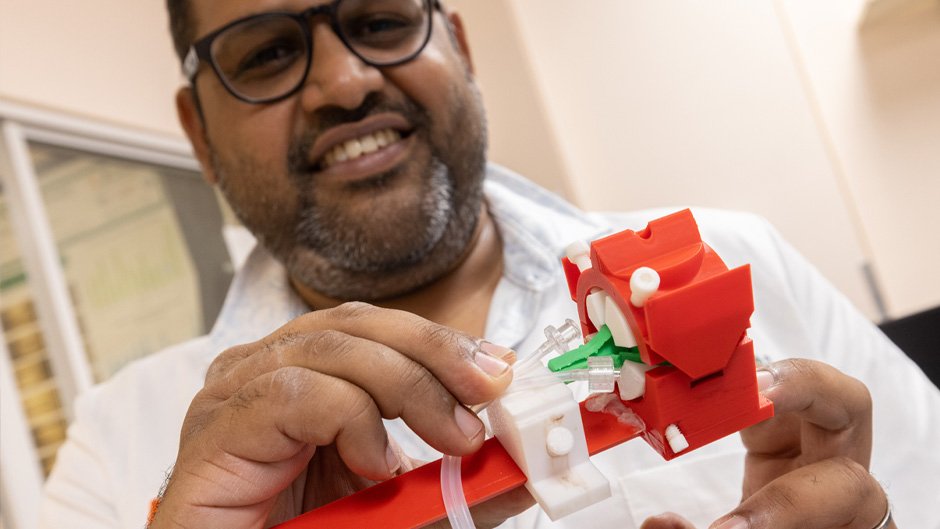In a bold step toward curing blindness, researchers at the University of Miami are developing the world’s first viable system for whole human eye transplantation—a feat never before achieved due to the eye’s complexity and its intimate connection to the brain. At the heart of this effort is a novel device called the eye-ECMO, designed by biomedical engineer Ashutosh Agarwal and his team to keep a donor eye alive and functional outside the body.
Inspired by extracorporeal membrane oxygenation (ECMO) machines used in heart and lung surgeries, the eye-ECMO circulates oxygenated blood mixed with a custom solution through the eye’s vessels after removal. This continuous perfusion preserves the retina, which is essential for transmitting visual signals to the brain. The team also created a companion device called the eye-HOLDER, which safely transports the donor eye between surgical and research settings.
In a recent milestone, the team successfully recovered a donor eye and maintained its viability for several hours using the eye-ECMO system. Fluorescent dye tests confirmed active circulation through the retina, and optical scans showed the retina remained functional—an unprecedented achievement in U.S. medical history. The operation was supported by a major grant from ARPA-H, the U.S. Department of Health and Human Services’ advanced research agency.
Led by Dr. David Tse and Dr. Daniel Pelaez of the Bascom Palmer Eye Institute, the project brings together 17 faculty members across engineering, ophthalmology, neurosurgery, and plastic surgery. While the eye-ECMO and eye-HOLDER solve critical challenges in organ preservation and transport, the team’s next hurdle is reconnecting the optic nerve, which carries visual information to the brain. This remains the most formidable barrier to restoring sight through transplantation.
To address this, researchers are refining surgical techniques and designing a gimbal-based eye-HOLDER for more stable transport. They’re also exploring ways to preserve and regenerate the optic nerve, which could unlock treatments for other neurological conditions. The project is expected to span six years, but early successes have energized the team and brought the once-unthinkable goal of whole-eye transplantation within reach.
Here’s a video from the University of Miami that explains more:
Article from the University of Miami: Paving the way for human eye transplants

